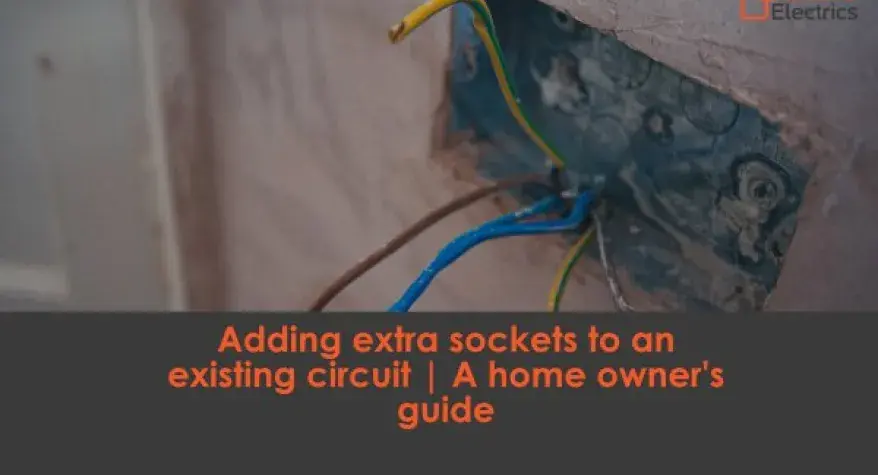Adding extra sockets to your existing circuit.
According to a report from statista.com, the average UK homeowner owns 9 electrical devices, including laptops, tablets and mobiles, so it's hardly surprising that I get a lot of enquiries about adding sockets to existing circuits! One question I am asked by my customers more than any other during these exchanges is “how many sockets can be added to an existing circuit?” The simple answer is, technically, as many as you like. However, there are others factors that are important when safely adding extra sockets to an existing circuit.
What factors affect how many extra sockets can be added to a circuit?
1. Cable size
The smaller the cable, the less load it can take.
2. Size of the physical area covered by the circuit
3. Electrical load
As always, depending on how many devices you are using you could overload the circuit with too many power points.
4. The quality of the protective device
Always have a qualified electrician check your existing circuit to find out how many extra sockets are safe to add to your home’s circuit.
What are the different ways you can add sockets to your circuit?
1. Spurs
A spur can be connected to an existing socket on a circuit but only if it has not been spurred off already. Adding a spur is a common way that an extra socket can be added in a room and it’s perfectly okay to be done so long as it abides by the regulations.
If more than one spur needs to be added, the socket would need to be fed from a fused spur. This would be connected via a separate fuse that would protect the cable.
A fused spur powering multiple sockets would allow up to 13amps to be drawn from the electrical items plugged in the sockets. This means, in theory, you could have as many sockets as you like from a fused spur, as long as not more than 13amps is needed from the items plugged in.
2. Radial circuits
Radial circuits are circuits that carry the power from your consumer unit to a socket. Radial circuits tend to be used to supply mains power to sockets and lighting points. Other common uses for radial circuits are to power one particular electrical item on a circuit, for example, boilers, ovens, hobs, or immersion heaters.
The key thing to remember about a radial circuit is that it needs to end. It does not carry on back to the consumer unit like a ring main or ring final circuit would do.
It’s important that when adding a socket the person carrying out the work knows what type of circuit the potential new socket will be connected to.
As a homeowner am I allowed to just add a socket?
Absolutely. Legally, there is nothing to stop you as a homeowner from adding a socket, as long as you comply with Part P building regulations, are deemed competent, and have the correct test equipment and knowledge. That is quite a comprehensive list! So, it is always best to get a qualified electrician to add sockets to your circuit.
Just remember, do not just add a socket to an existing circuit. You have to check the various factors that have briefly been mentioned. Remember, if you are ever in doubt contact an electrician to carry out the required work. Contact A Bathe Electrics for all your domestic electrical needs.




